J.N. “Ding” Darling National Wildlife Refuge
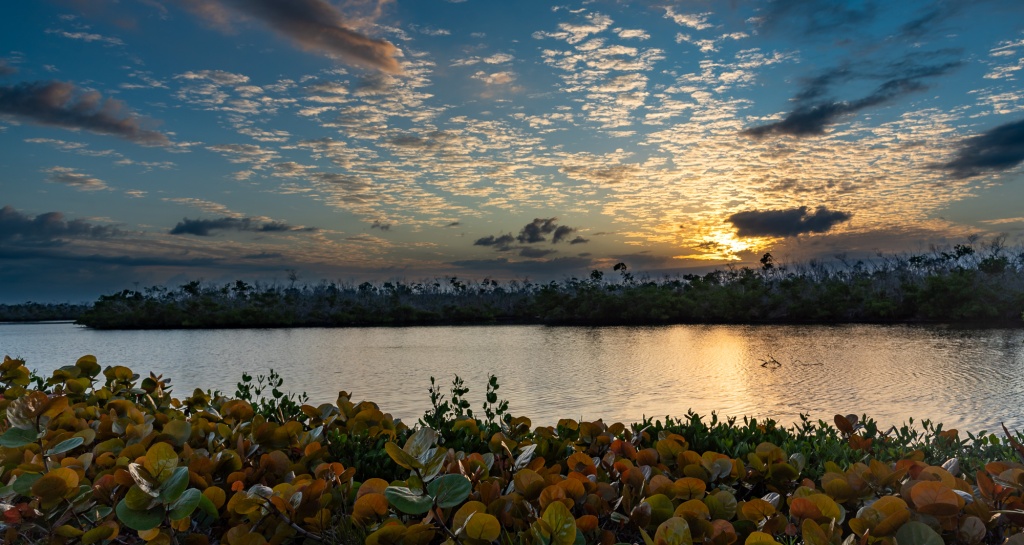
(Click on images to enlarge, click again to zoom.)
Sea breeze. Invigorating. Gulls calling, mullet jumping, the unique aroma of low tide, fiddler crabs scurrying for cover. Gini and I grew up with these sensations along Florida’s Gulf of Mexico coast. It feels like home.
Today we are visiting the J.N. “Ding” Darling National Wildlife Refuge on Sanibel Island just west of Fort Myers, Florida. Sanibel is a barrier island jutting into the Gulf of Mexico and the refuge is on the protected north side of the island.
Consisting of about 6500 acres, the refuge is a terrific place to see birds any time of year but it offers plenty of protection and food for migrating birds in the fall and spring. In addition to a very informative visitor’s center, there is a one-way wildlife drive and several trails to explore.
Jay N. “Ding” Darling was a prolific political cartoonist and worked at newspapers in Iowa for 50 years in the early 1900’s. He became interested in conservation and in 1934 was named head of what would become the U.S. Fish and Wildlife Service. He was awarded three Pulitzer Prizes for his cartoons and he drew the picture for the first Federal Duck Stamp. I think he would be humbled by having a refuge named for him.
In September 2022, the refuge and large areas of Florida’s southwest coast were severely damaged by Hurricane Ian. The large storm came ashore just north of the refuge at Cayo Costa with 155 mph sustained winds. Coastal areas were inundated by a storm surge of 12-18 feet above ground level. Damage is still apparent all along the coast as some buildings are yet to be rebuilt and boats of all description are still at rest far from the shoreline, most too damaged to salvage. The recovery from the devastating storm has been miraculous. Most notable is the attitude of the residents. No defeatism here.
We lingered at a spot offering a nice view of the rising sun chasing away night time clouds. An Osprey dove for a shiny speckled trout which may have been breakfast for a new family. Many Osprey nests were occupied and we spotted two chicks in one. It was low tide and hordes of shorebirds darted, stopped, darted, pulled some morsel from the mud, darted – most were too far for photos but it was fun watching them. Herons, egrets, pelicans, plovers, sandpipers. Some are in breeding plumage but – shhh! – at least one night shift worker is resting now that the sun is up.
Gini had conjured up a magical smoked salmon dip which we enjoyed with wheat crackers and fresh strawberries. All of the bird life was fantastic and we had a wonderful bonus as there were flowers aplenty to enjoy. The flowers were especially noteworthy as they were growing profusely among the bleached carcasses of scrub oak and mangrove which had been ripped from the ground by Hurricane Ian.
Shield your eyes. The sunrise is bright and rather beautiful this morning.
The shorebird-formerly-known-as-Black-bellied Plover. Apparently, the birding powers that be decided we shall now call it the Grey Plover. Of course, I most likely shall not. I have photos with more detail, but I sort of liked this distant one showing the shoreline colors and their reflection.
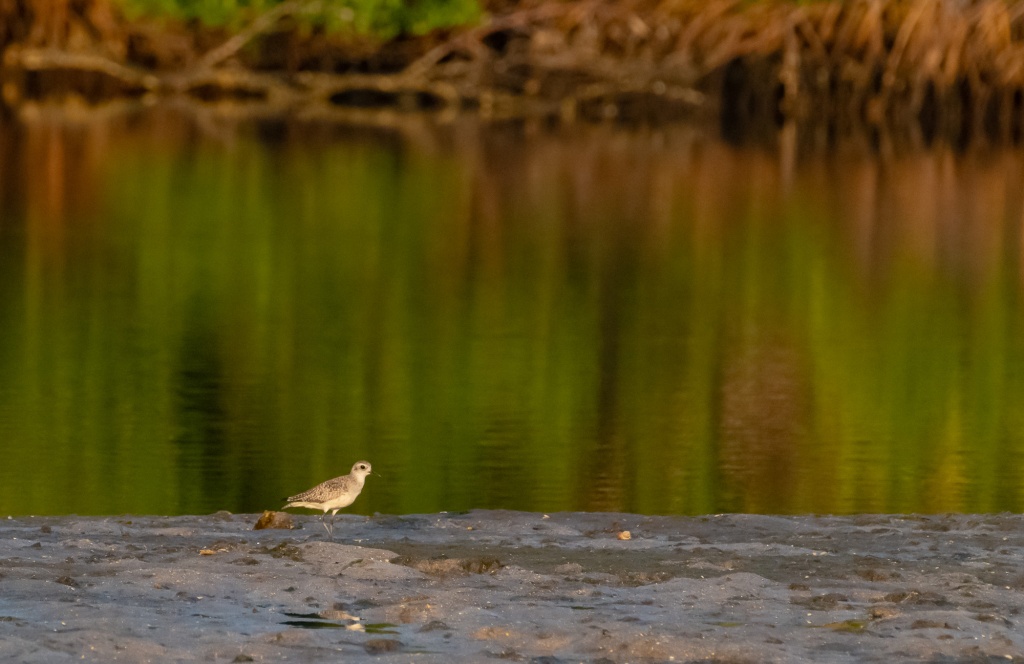
One of the smallest shorebirds in North America, a Least Sandpiper probes for worms and crabs.
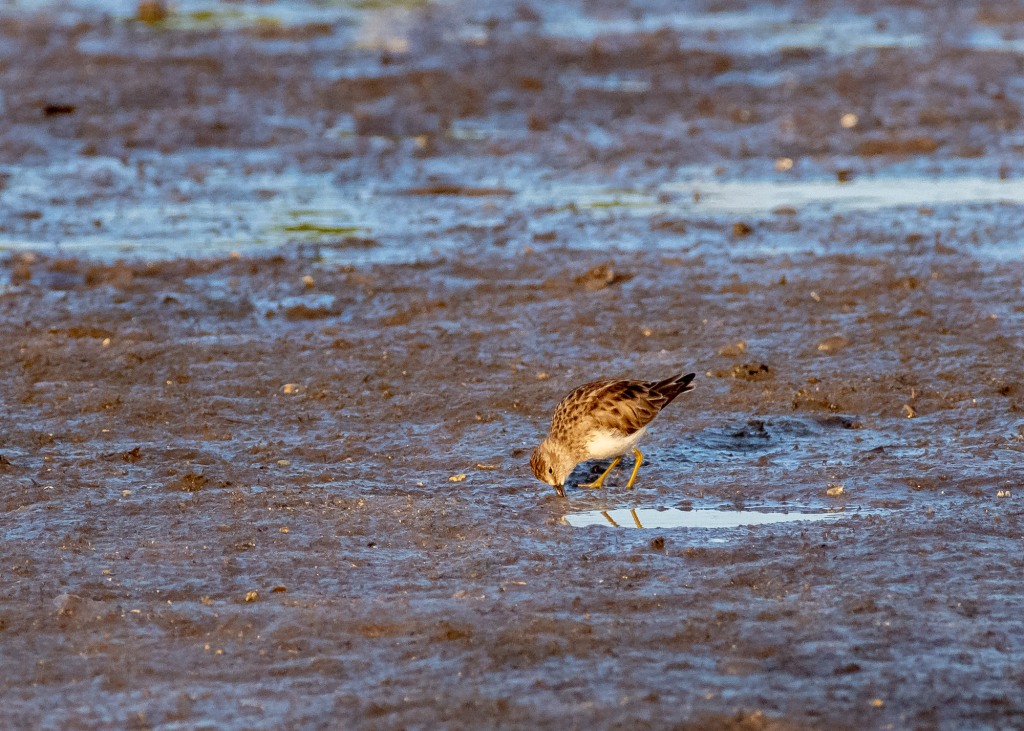
Sea Grape (Coccoloba uvifera) is not related to grapes and is actually in the Buckwheat family. Someone decided the cluster of fruit it bears toward the end of summer resembles grapes. It can grow to nearly 20 feet tall and the large round leaves can be quite colorful. You can see some low-growing plants in the first image above (Sunrise).
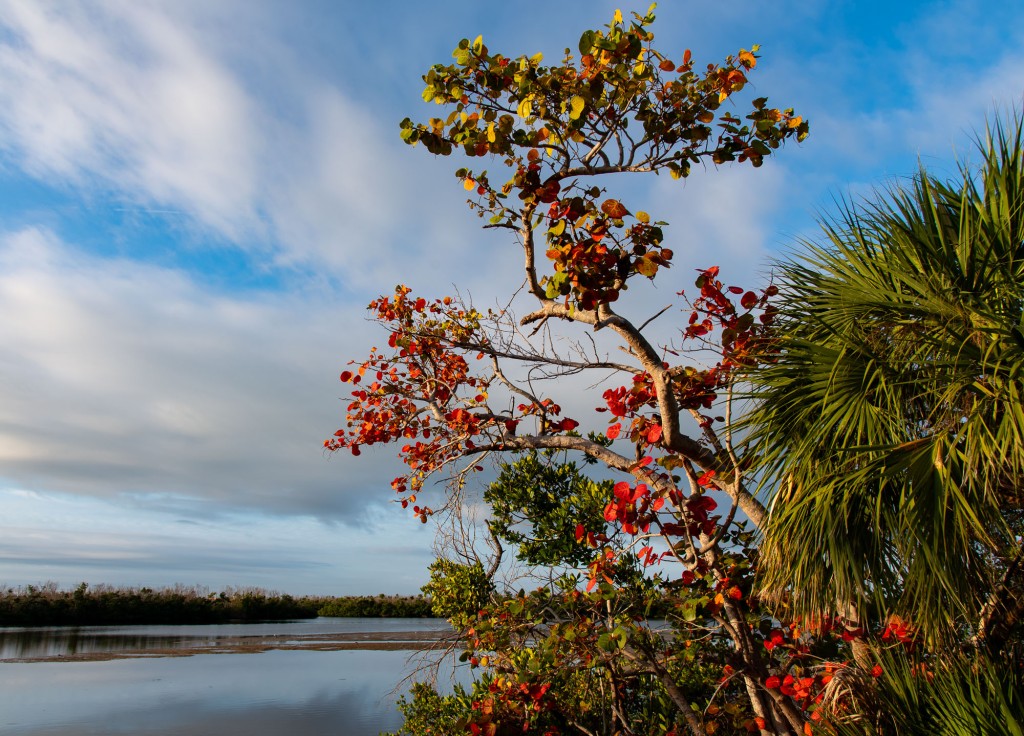
As Spring breeding season arrives, a Little Blue Heron displays darker legs, beak and eyes. A bright blue patch forms at the base of the bill and a long brownish/reddish plume decorates its head.
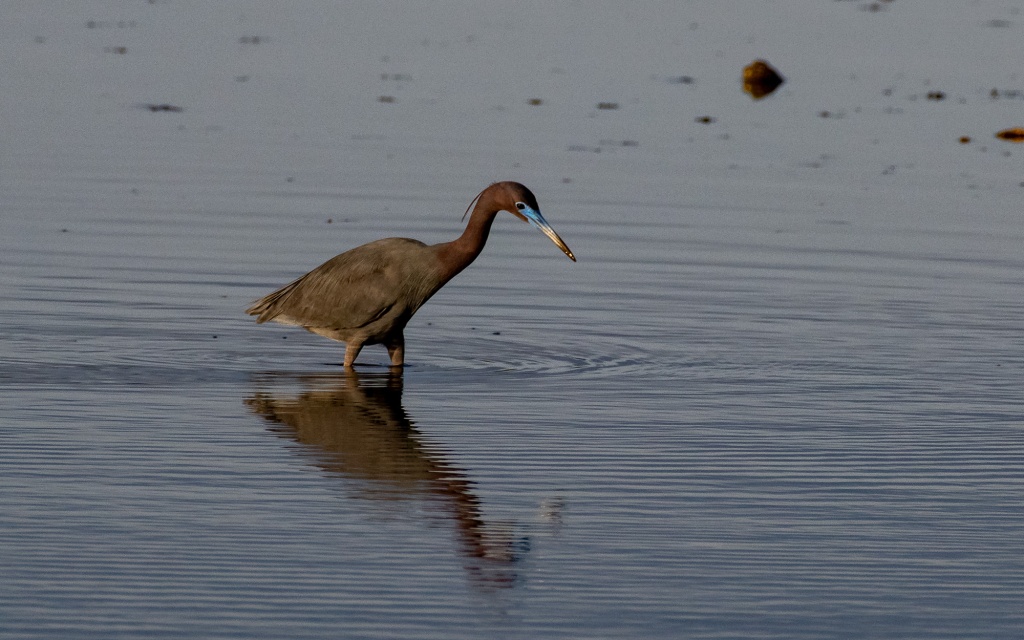
More plumage changes for Spring are exhibited by the White Ibis. Bill, facial skin and legs become brighter red than normal.
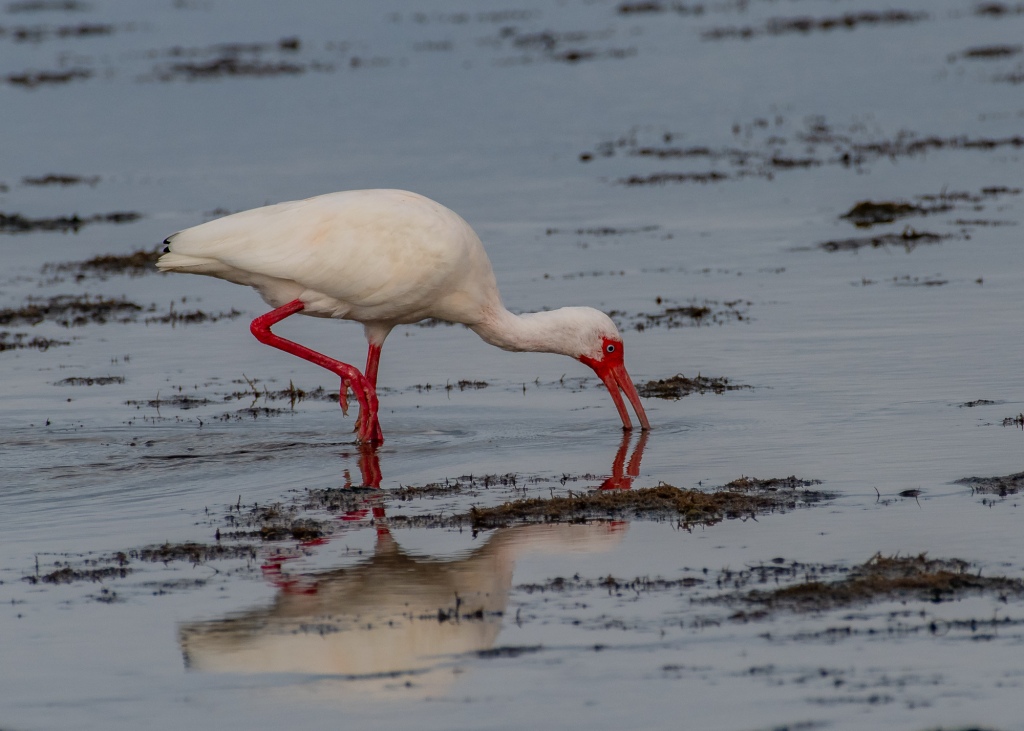
Coastal Florida, from north-central southward, has abundant sections of salt-loving mangrove. There are three species of mangrove in Florida. Maybe. Commonly accepted are Black, Red and White Mangrove. Many “experts” regard the Button Mangrove (Conocarpus erectus) as a fourth species, but just as many do not. Also called Buttonwood, this member of the almond family resembles a mangrove in its appearance, habitat and growth characteristics. Call it what you will, it’s an interesting plant. Its “flowers” are more like fruit-like “drupes”. We thought it was mighty nice looking.
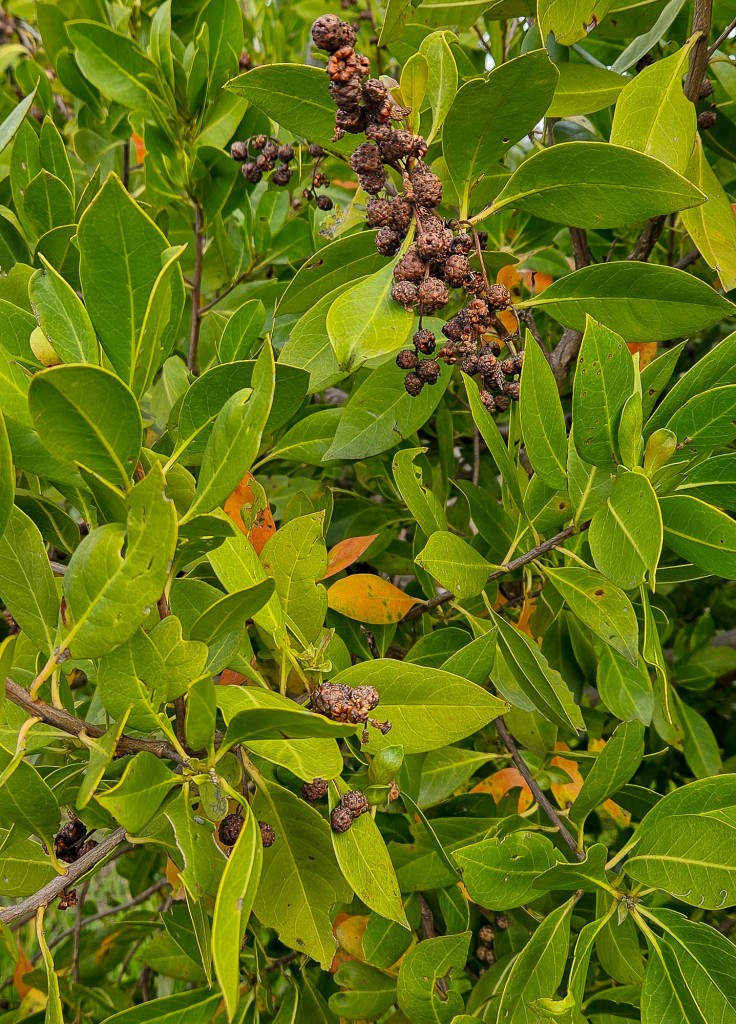
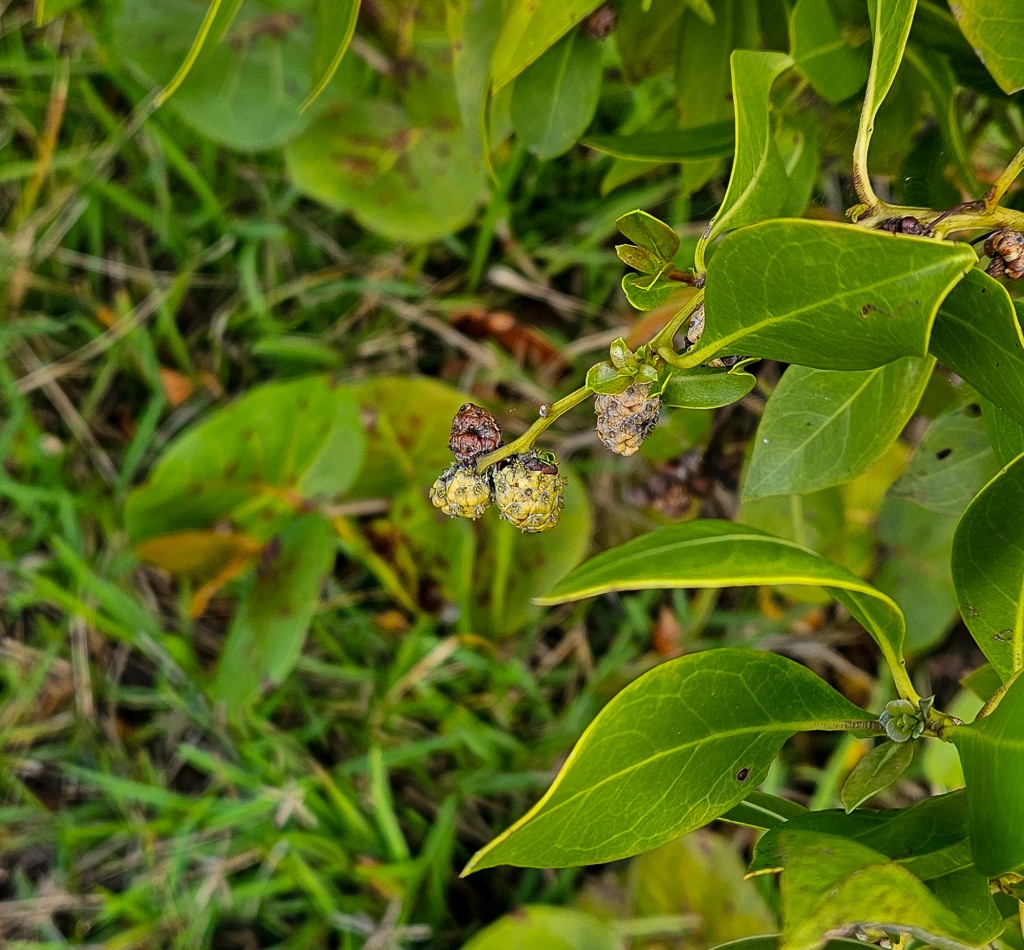
One of the “officially approved” mangroves, the Red Mangrove (Rhizophora mangle), was really putting on a flower show. The yellow blossoms were abundant.

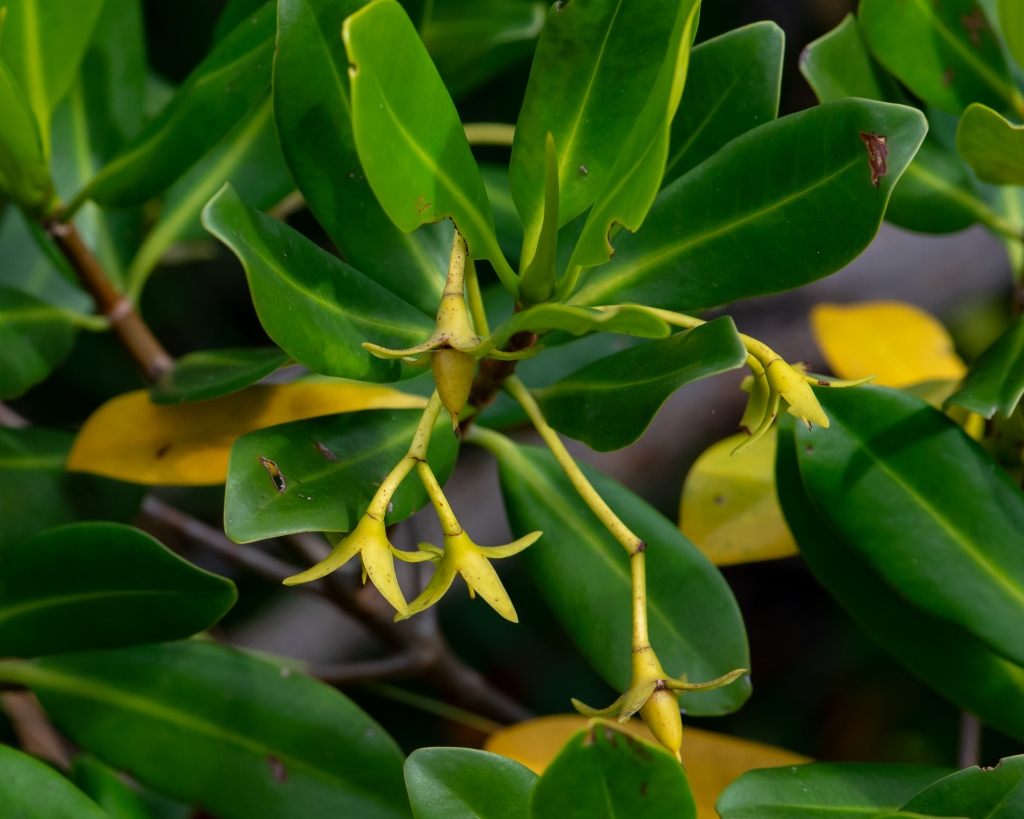
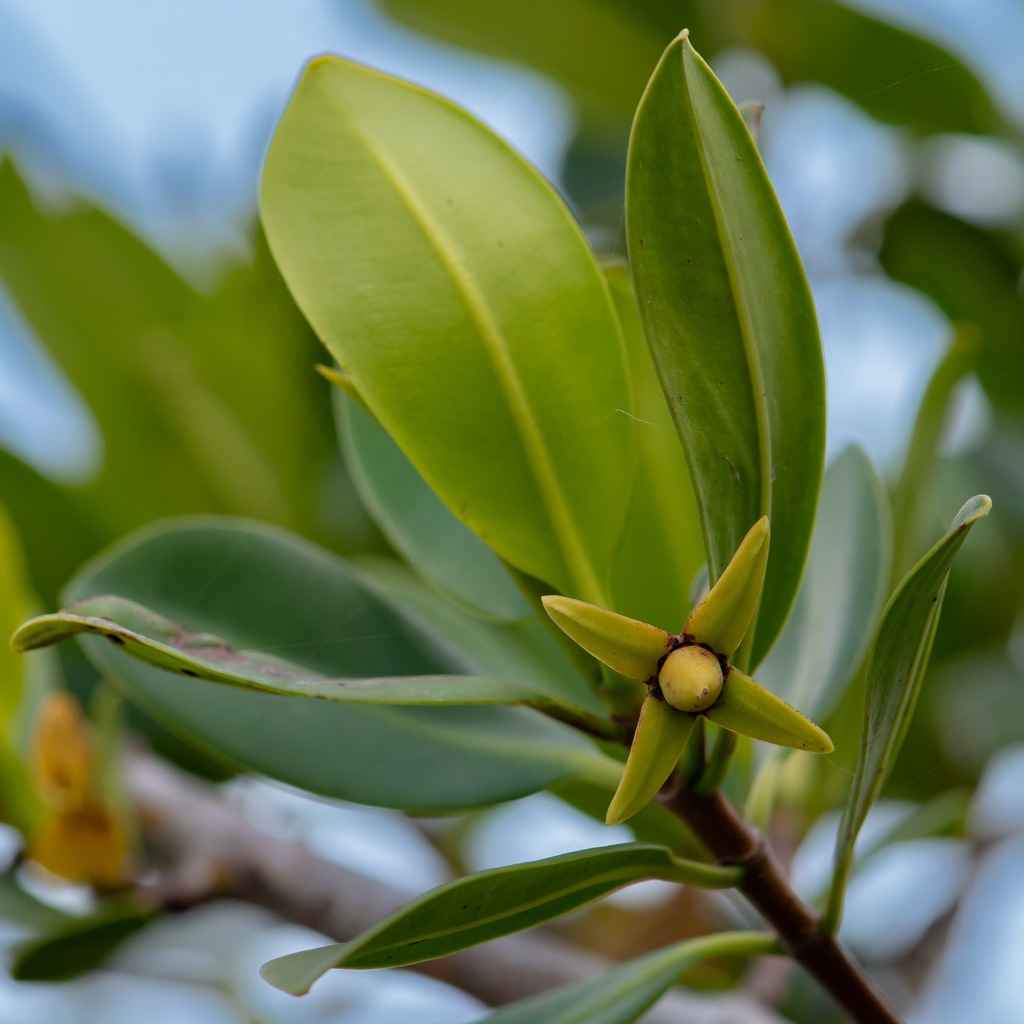
All morning, Ospreys were in the sky as they constantly splashed into the shallow salt water. Sometimes they came up with a catch and flew off for a snack or a delivery.
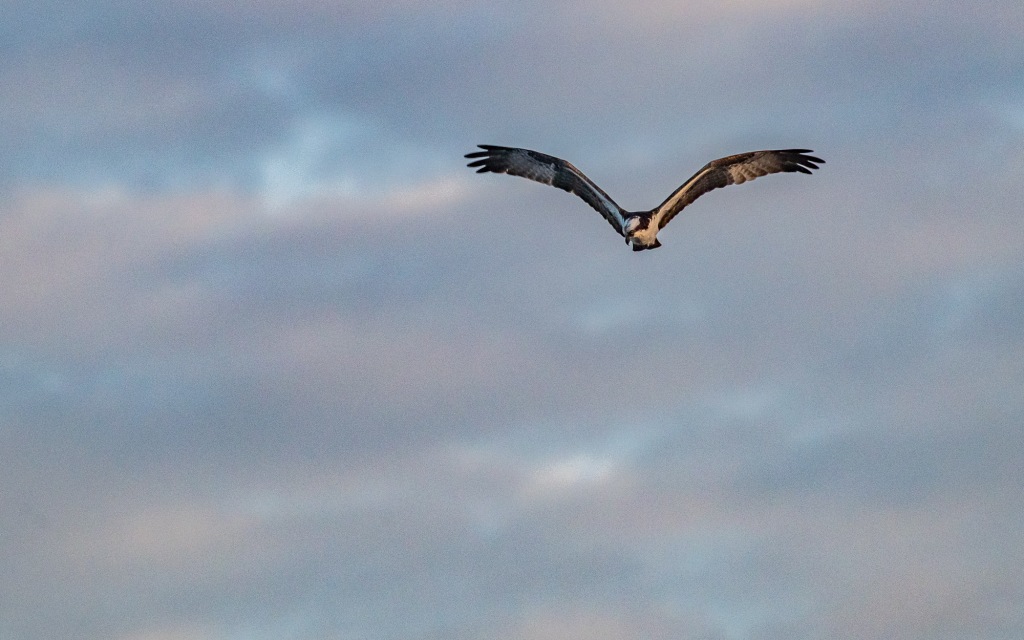
Preening is the primary task early in the morning for groups of American White Pelicans. We found several such groups who roosted at night on sandbars which are fairly safe from predators.

A new flower for us! Goatweed (Capraria biflora). It is a member of the Figwort family. Small but beautiful blooms.
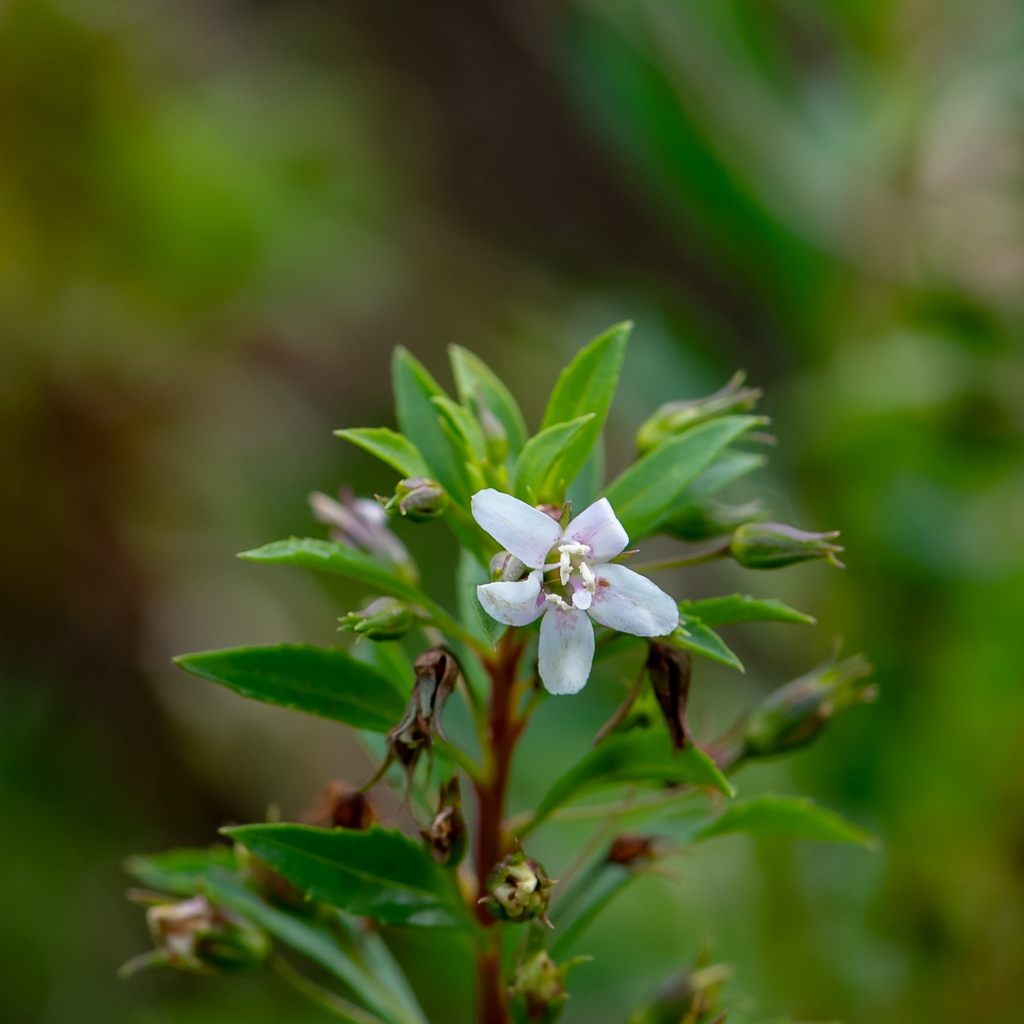
We observed a fairly common event. Expert hunter finds food. Lazy hunters try to take its food. A Red-breasted Merganser was super active locating schools of small fish and scooping them up. An immature Little Blue Heron tried several times to snatch a fish from the Merganser but was unsuccessful. An adult Little Blue Heron flew in to help junior. They stalked the successful hunter, but the Merganser was too quick and they eventually had to go hunt somewhere else.

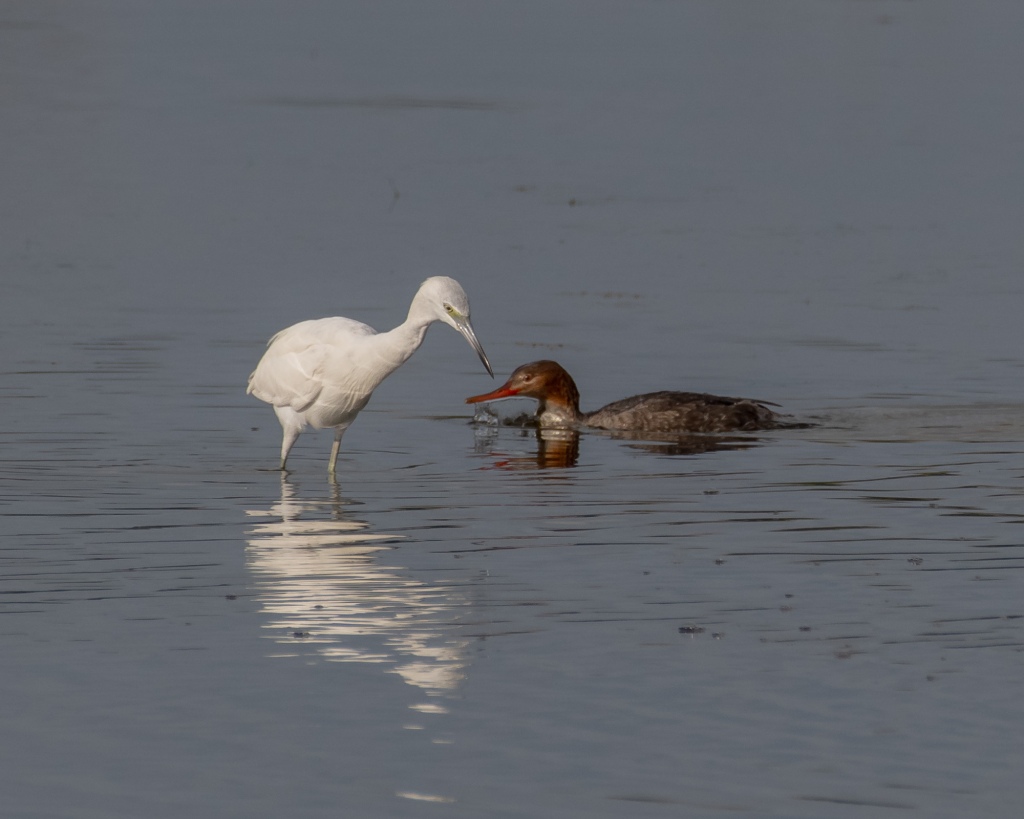
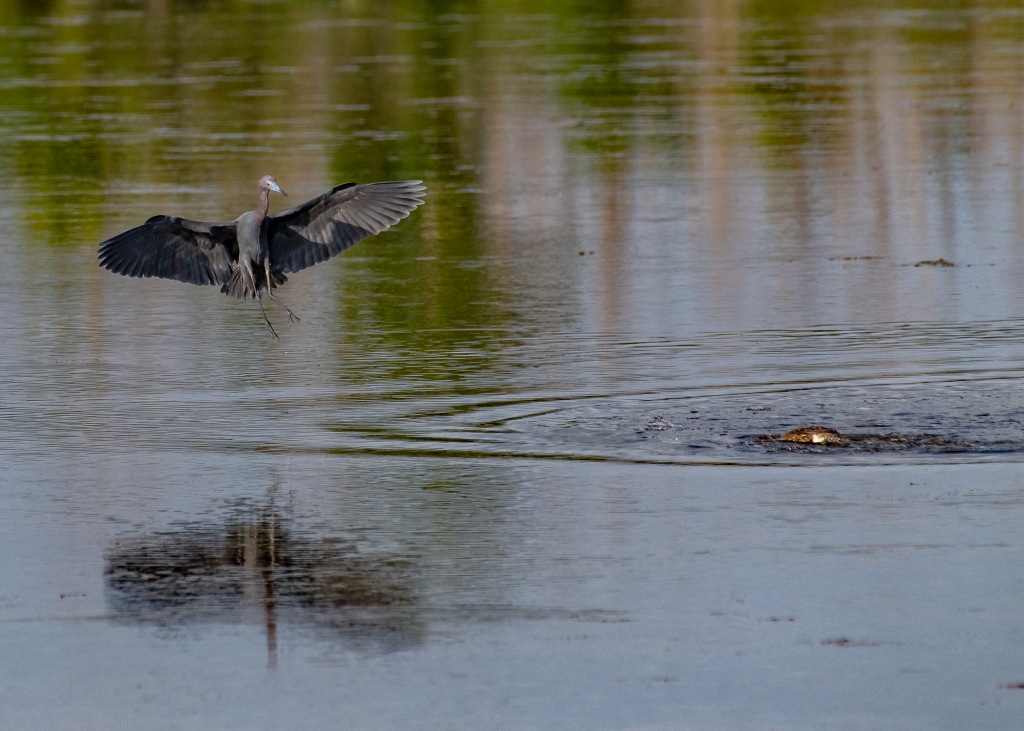
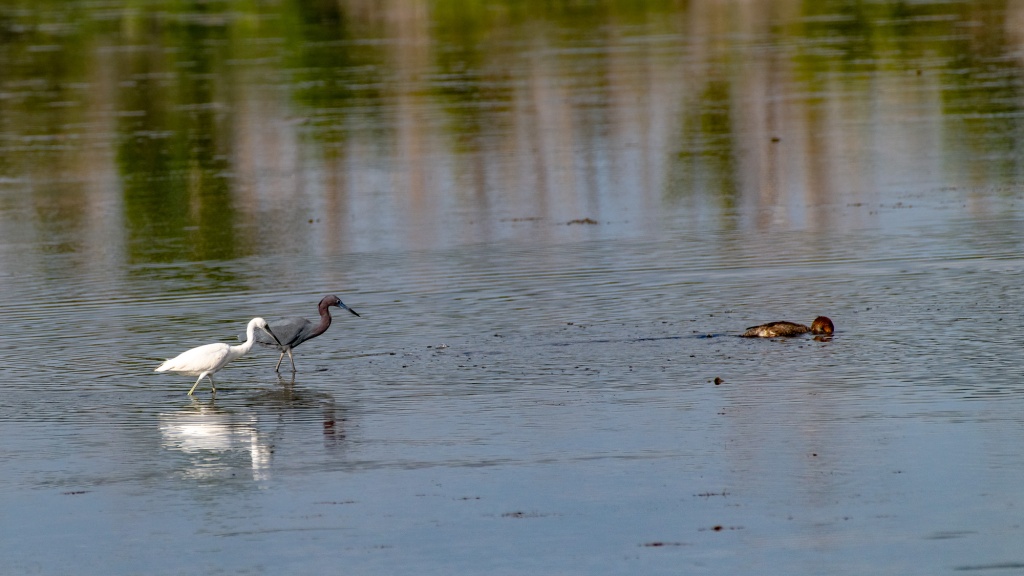
Lord of the salt flats. Great Blue Heron.
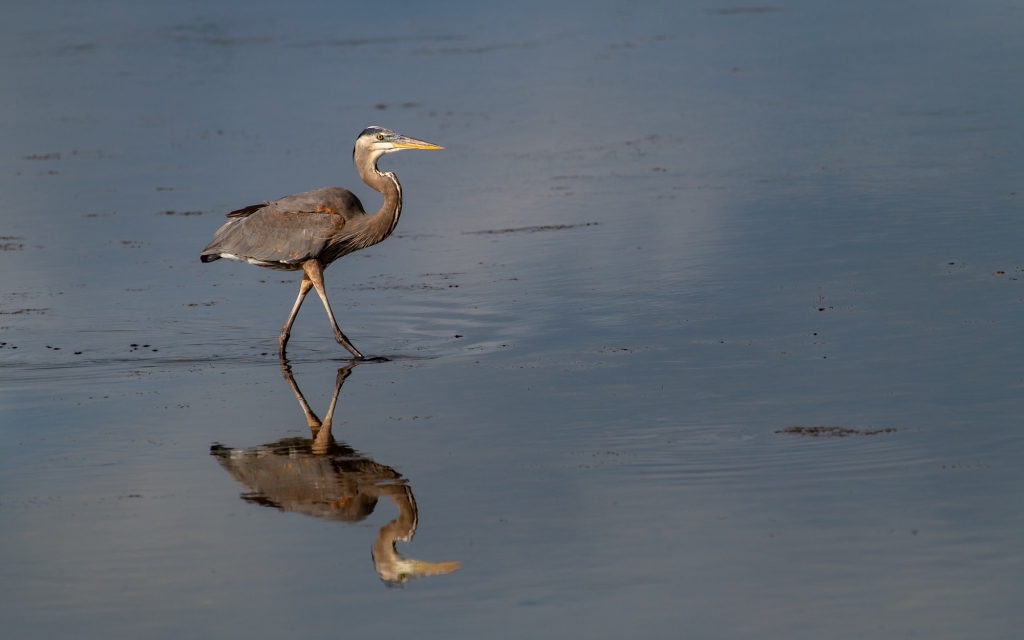
Another long night shift completed, a Yellow-crowned Night Heron catches a bit of rest before it’s time to do it again.

It was startling to see how much damage had been caused by Hurricane Ian, both in heavily populated areas as well as within the refuge. We were very impressed with the efforts to rebuild and restore urban and suburban destruction. Over the years, we have experienced how resilient Nature is in response to devastation. The cycle of life as Spring was unfolding within Ding Darling NWR was extremely heartening to observe.
Enjoy your search for a natural place and come back for a visit!
Additional Information
Ding Darling NWR: https://www.fws.gov/refuge/jn-ding-darling/visit-us
Ding Darling cartoon, Des Moines Register, circa 1926: https://digital.lib.uiowa.edu/islandora/object/ui:ding_3058/print?clip=identifier%3Dhttps%253A%252F%252Fdigital.lib.uiowa.edu%252Fiiif%252F2%252Fui%253Ading_3058~JP2~5a595bbf2fcd87d44e13644a383b9fd25254c68f5bbfa83160b0c55f39fcd5bc~default_public%26region%3D0%252C117%252C1889%252C2127%26size%3D1890%252C2298
Thanks for the introduction to the Sea Grape! What gorgeous colors in those leaves. When I was first viewing your banner sunrise photo, I was thinking the low-angled light had certainly picked out some warm russet and copper colors in the spring leaves… but then to see the full-on crimson was really special.
LikeLike
They may not make good wine, but those Sea Grape leaves sure are brilliant!
It was a good visit.
LikeLike
Thank you for that stunning, gorgeous sunrise! Beautiful composition. Lovely series of birds and flowers too. I’ve yet to get the opportunity to explore DDNWR, the one time we had a chance many years ago, most of it was closed (I don’t remember why).
LikeLike
That refuge is not especially large, but with the changing tides, you can stand in one spot for a couple of hours and see a whole different set of birds fly in and out as they follow the food. Pretty neat.
One thing we have trouble remembering is the refuge is closed every Friday. Of course, there are plenty of spots nearby to enjoy.
Have a great weekend and thank you for visiting, Donna.
LikeLiked by 1 person
Thank you for sharing your bounty. Our ospreys are only now arriving back in the area and it will take a while before we get to see them on their nests. I also envy you various herons–we only get to see the Great Blue here (unless one of the other two species you featured gets blown here). It’s good to know that the refuge has begun to heal from the hurricane damage.
LikeLike
Happy to share, Tanja.
We all have so much to share from our unique territories. Such diversity is why we love exploring Nature.
Still can’t get over your Dippers!
LikeLiked by 1 person
Nature’s treasures are manifold indeed!
LikeLike
WOW!! You need to warn people… that opening photo about knocked me off my chair. Gorgeous!!
LikeLike
Oh, like you warn US when you flash those fabulous desert skies! 🙂
Nature is beautiful. Even without a warning label.
LikeLike
Looks like you had a great road trip! Beautiful shots. It’s sad to see that destruction even over a year later. We’re far enough away that we forget about that storm.
PS. I’ll always call it a black bellied plover..
LikeLike
Thanks, Dina. We had fun. Ready to do it again.
Yep. And the Northern Harrier is still a Marsh Hawk.
LikeLike
As a native Iowan, I’ve known about Ding Darling my whole life, but I didn’t know that such a special place had been named for him. When we took Iowa history in school (perhaps fifth grade), he was one of the notables we studied. And, because my dad was an avid stamp collector and had a special collection of duck stamps, I knew about his connection to those, too.
Now that bluebonnet season is winding down, I need to get back down to the coast and see if I can find our black mangrove. I’d read that you have several species; it was great fun to see them here. Whether or not the buttonwood is a mangrove, its flowers remind me of the fruits of the bald cypress.
That juvenile little blue heron’s expression is a hoot. It was a determined critter, even if unsuccessful in that spot. There’s nothing like an attentive parent to provide a little guidance!
LikeLike
We used to visit Ding Darling reserve often several years ago. It gave us a good excuse to visit a couple of really nice seafood joints in the area. (But who needs an excuse?)
We tried to find blooming black and white mangrove so we could compare and contrast, but, alas, no luck this trip. More coastal trips needed!
A “good” parent might teach the young ‘un how to fish fer itself! We have seen the same scenario play out almost along any coast. There is always somebody who wants to take a shortcut and steal a meal.
LikeLiked by 1 person
Your description of the power of destruction wrought by Storm Ian in 2022 was extremely sobering, Wally. It is good to hear, however, that Nature is recovering, even if the man-made objects aren’t.
As always, a very enjoyable and informative post from you, but I feel compelled to nominate some stand-out images. The header sunrise image is gorgeous, the group of pelicans is amazing, and the shot of ‘the lord of the salt flats’ is magnificent.
I hope that all is well with you both – here, there are events that are awaited with eager anticipation.
Take good care – – – Richard
LikeLike
Thank you, Richard.
The nice sunrise seemed to set the tone for the day. Beautiful encounters everywhere!
We found a really large number of birds along the coastal areas but most were too distant for good photos. Approaching closer was usually not an option as the silly birds chose to perch on sandbars and islands beyond our ability to move any closer.
The jury is still out on half of the team just now. Gini spent a few days being ill last week and has not yet fully recovered. Keeping her anywhere near immobile is an impossible task.
Fingers crossed for positive outcomes of your events.
LikeLike
What a dramatic photograph you opened with.
Your photographs of the button mangrove show that some of its drupe-like flowers droop.
Capraria biflora is new to me too. The database of the Lady Bird Johnson Wildflower Center has only one picture of it, so if you’re of a mind to donate a few, I’ll bet they’d gladly accept.
Imagine if human faces and legs turned bright red every spring.
Dove can be a pigeon or the past tense of dive. I’m sure you’d enjoy watching if a dove dove.
LikeLike
We were a bit lucky with that sunrise shot as the gates to the place opened ten minutes before the scheduled dawn. The low clouds helped “delay” the sun’s actual appearance until we found a spot and set up the camera gear.
Thank you for the idea of sending some Goatweed images to the LBJ center.
Legs are one thing, but when I’m around Gini, my face still turns bright red at, well, certain times.
Your last sentence architecture had me recalling last month’s back yard kerfuffle. A Cooper’s Hawk performed a dive and dove on a Dove which dove under the feeder for cover. I dove for the camera but missed the action.
LikeLike
You arrove too late.
LikeLike
Thanks for sharing shots and information. Captivating, as usual. 👍
LikeLike
We really had a wonderful time and are happy to share a little of it.
Thank you for visiting.
LikeLiked by 1 person
What an absolutely magical day. Thank you, thank you, thank you.
LikeLike
You’re welcome, you’re welcome!
Many of our days seem magical. I think it’s the company I keep.
LikeLike